Pvt. Charles Edward Matthews and S2 Russell Levan Crawford
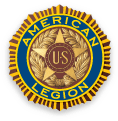 |
| Matthews-Crawford Post 131, Warrensburg, MO |
Pvt. Charles Edward Matthews:
On September 20, 1918, Charles E. Matthews died from wounds while serving in the U.S. Army. Matthews died in France and was buried in the Centerview, Missouri cemetery. His death was reported officially on 15 October 1918.
 | ||
| Pvt. Charles Edward Matthews Centerview, MO DOW 20 Sept 1918
|
The Evening Missourian., October 15, 1918

(Surname) (Christian name) MATTHEWS, CHARLES EDWARD
(Army serial number) 2,845,448
(Race) W
Residence: RFD 3 CENTERVIEW, MO
*Inducted: WARRENSBURG, MO on 4/27/1918
Place of birth: HOFFMAN, MO
Organizations served in, with dates of assignments and transfers:
38 CO 164 DEP BRIG TO 15 MAY/18;
CO L 356 INFANTRY TO DISCHARGE
Grades, with date of appointment: PVT
Engagements:
Wounds or other injuries received in action:
Served overseas from † 6/4/1918 To † 9/20/1918
FROM CAMP FUNSTON, KANSAS,
DIED 20 SEP 1918 OF WOUNDS RECEIVED IN ACTION; FATHER, WILLIAM H. MATTHEWS, CENTERVIEW, MO NOTIFIED
TO SCHWEICH, GERMANY via
CANADA, ENGLAND, FRANCE, BELGIUM, AND LUXEMBOURG.
On the 23rd day of May 1918, Company "A" of the 356th Regiment of Infantry, 89th Division, departed from Camp Funston, Kansas, where we had trained for the past nine months, to add our might to the thousands of other liberty-loving Americans than being rushed to the assistance of the heroic French and British Armies, who, for the past four years had grappled with the hordes of barbarians from Germany on the battlefields of France and Belgium. We left our homes and loved ones to fight for the principles of Liberty, Justice, and Equality, and we were confident of success.
After traversing the Grand old State of Missouri, where the majority of us lived, we traveled through Illinois, Indiana and Michigan, crossing the Detroit River and landing at Windsor, Canada, on the 26th day of May. An interesting trip thru Canada and then we crossed back into the States at Niagara Falls, proceeding from there through the scenic hill of New York State and down the Hudson River to Camp Mills, on Long Island. We spent a busy six days here in being properly equipped for "getting the Kaiser’s goat", and on the 3rd day of June 1918, we went on board the English ship "Coronia", and the next day slipped quietly out of the harbor for a destination unknown to us. Our trip across the "big drink" was highly interesting but uneventful. None of the dreaded "U" boats were sighted and after some twelve days of cold and squally weather we sighted the coast of Scotland and Ireland and all breathed freely again. We put into the harbor at Liverpool, England, on the 16th and debarked on the 17th day of June 1918, from where we hiked to Knotty Ash, a so-called rest camp. We spent several days here in the rain and mud and were glad when an order came for us to entrain for Southampton. This journey will long be remembered by us as the most interesting one. Or itinerary led through a picturesque part of England to the coast. Spent a miserable night in the rain at Southampton and on the next day, June 20th, we embarked on the speedy boat "Viper" and took a thrilling ride across the English Channel to Le Havre, France, arriving there at 3 A.M., June 21st. An interesting hike thru this old coast city gave us an opportunity to see the wonderful morale exhibited by the French people as they went about their daily tasks while a million or so vandals were pillaging and plundering their cities and murdering their men, women and children. On June 22nd we piled into our "8 chevaux or 40 hommes" cars and after a day and night ride found ourselves at Liffol le Grand, France, which was to be our training sector for the next six weeks.
August 4th, 1918, having been pronounced fit for battle, we were loaded into trucks and started for the front. We unloaded at Boucq, France stopped here overnight and on the night of August 5th, started our memorable first trip into the front line area, in the Toul Sector opposite the famous strong-point, Montsec Hill, where thousands of Frenchmen had been sacrificed in a vain attempt to hold it. The hike to our position in support at Newton Cross-Roads was made under circumstances which brought us to realize for possibly the first time that we were actually in a zone where history was in the making: where men made the supreme sacrifice willingly for the cause of Freedom.
As usual it was raining and dark and absolute silence prevailed, except for the tramp, tramp, tramp of the dough-boys as we plowed our way through the mud. We marched over a much-camouflaged road, lighted up every few minutes by flares and rockets and from the hills around us many searchlights played upon the heavens in an effort to locate a Boche flyer who was hovering over us. Now and then the stillness would be broken by the report of a distant cannon or the rattle of a machine gun somewhere along the line. We arrived at Raulecourt about 10 P.M., and stayed there a night and day, moving out to our position at Newton Cross Roads the next night.
We remained in this position until the night of the 15th of August, when we were ordered to take over a sector in the front line opposite Xivray and Montsec. During this relief, a few stray shells came our way, but no one was injured. Headquarters was established at Rambucourt, where not a house remained untouched by artillery fire. Our daily reports contained the usual "intermittent artillery fire", and we were beginning to think that our stay here would be a very quiet one, but in this we were doomed for a disappointment. On the early morning of the 19th day of August, the Boche artillery opened up on our sector and threw over about a hundred hardware stores and we were expecting a raid on our position, but the Boche must have had cold feet as he did not venture forth. This was our "baptism of fire" and the boys stood it like veterans. Our first and only casualty was sustained by Private William E. Hellyer, who had a slight shrapnel wound in the arm. During our stay in this position we gained much valuable experience for later trials, Patrols were sent out nightly and many thrilling moments were passed, especially when Corp. Bernard P. Gifford got caught in the enemy wire and tore down about an acre of it extracting himself. Air fights were numerous and we witnessed our first Boche plane being brought down in flames by an American Aviator. We were relieved on the night of August 23rd and took the narrow-gauge railway back to Cornieville, where we remained for about eight days before doing another turn in support at Newton Cross-Roads. It was about this time that we first became acquainted with "Mr. Cootie" and his millions of cohorts, which were destined to give us about as much worry as the Boche. They would "fall in " on our chest, do "right dress", "as skirmishers" and then "dig in".
September 8th, after our second stay at Newton Cross-Roads, we hiked to Ansauville, where, after a mysterious stay of two days, we discovered that we were a unit of the All American Army for the St. Mihiel Offensive. Our Battalion took a position in Hazel Woods on the 10th day of September 1918, and awaited the order which would send thousands of Americans swarming towards the Hun lines. At 1 o’clock A.M., September 12th, 1918, the American Artillery laid down one of the greatest barrages in the history of the War. Thousands of guns, from the marvelous French 75’s to the 12 inch American Navel guns belched forth a stream of iron upon the well-prepared positions of the enemy. For miles, the sky was lighted up by the exploding shells and the flash of guns and it was a wonderful and terrible sight. With ever-increasing fury the barrage lasted until 5:30 A.M., when it lifted and the boys went "over the top", full of confidence that nothing could stop them. It was not long until the roads to the rear were lined with the Boche prisoners who had pulled the "Kamerad" cry and merciful Americans let them live that they might see the error of their ways. The boys, after the first few moments of nervousness, caught the spirit of battle and went forward with a will. It was near Euvezin, France, that a death occurred which cast gloom over the First Battalion. Major William J. Bland, formerly Captain of "A" Company, was killed instantly by a piece of shrapnel. Major Bland was an excellent officer and a noble man, one who was sorely missed in later operations. At the end of the second day all of our objectives had been gained and we dug in at Xammes Woods after an advance of about twenty kilometers.We continued in position in Xammes Woods, without incident, until the 20th day of September 1918. Boche planes became unusually active over our sector and succeeded in locating our position and in about ten minutes they began throwing G.I. Cans, Dog Kennels, etc., on the position. The bombardment continued for about an hour and we all thought that our time was about up. It served as a good lesson to us to keep all movements under cover of the woods. When the shelling ceased we found we had sustained casualties.
On September 12th in 1918, the American Expeditionary Force (AEF) under the command of General John J. Pershing launches its first major offensive operation as an independent army during World War I. After lending much-needed support to the exhausted French forces at Belleau Wood in June 1918 and in the Second Battle of the Marne in July, Pershing and Allied Supreme Commander Ferdinand Foch decided that the 1st Army of the AEF should establish its headquarters in the Saint-Mihiel sector and prepare a front-facing the Saint-Mihiel salient, a triangular wedge of land between Verdun and Nancy, in northeastern France, that had been occupied by the Germans since the fall of 1914. By heavily fortifying the area, the Germans had effectively blocked all rail transport between Paris and the Eastern Front. In mid-August, the AEF was given the task of leading an attack on the salient; it would be its first independent operation of the war. The attack began on September 12, 1918, with the advance of Allied tanks across the trenches at Saint-Mihiel, followed closely by the AEF’s infantry troops. Foul weather plagued the offensive as much as the enemy troops, as the trenches filled with water and the fields turned to mud, bogging down many of the tanks. Despite the conditions, the attack proved successful—in part because the German command made the decision to abandon the salient—and greatly lifted the morale and confidence of Pershing’s young army. By September 16, 1918, Saint-Mihiel and the surrounding area were free of German occupation. The American forces immediately shifted further south, to a new offensive near the Argonne Forest and the Meuse River, where they combined with British and French forces to further hammer the Germans, as the Allies moved ever closer to victory in World War I.
The Warrensburg Legion post was chartered in May 1919 as the Charles E. Matthews Post 131. http://www.legionpost131mo.org/mc_post_131_008.htm
Matthews was the first soldier from the Warrensburg area to give his life during World War I. Wounded during the St. Mihiel Offensive? Sept 12 to 16, 1918.
http://www.genealogybuff.com/misc/ww1/il-ww1-ago-casualties20.htm
Birth:
Dec. 1888
Death:
Sep. 20, 1918
Company L, 356th INFANTRY, 89th Division, American Expeditionary Forces, World War 1, DIED 20 SEP 1918 OF WOUNDS RECEIVED IN ACTION; FATHER, WILLIAM H. MATTHEWS, CENTERVIEW, MISSOURI NOTIFIED
http://www.archives.gov/veterans/military-service-records/standard-form-180.html
Family links:
Parents:
William Henry Matthews (1865 - 1937)
Carrie Anna Douglass Matthews (1870 - 1951)
Burial:
Centerview Cemetery, Centerview, Johnson County Missouri, USA
The Battle of Saint-Mihiel was a World War I battle fought between September 12–15, 1918, involving the American Expeditionary Force and 48,000 French troops under the command of U.S. general John J. Pershing against German positions. The United States Army Air Service (which later became the United States Air Force) played a significant role in this action.
This battle marked the first use of the terms 'D-Day' and 'H-Hour' by the Americans.
The attack at the St. Mihiel Salient was part of a plan by Pershing in which he hoped that the United States would break through the German lines and capture the fortified city of Metz. It was one of the first U.S. solo offensives in World War I and the attack caught the Germans in the process of retreating. This meant that their artillery were out of place and the American attack proved more successful than expected. Their strong blow increased their stature in the eyes of the French and British forces, but again demonstrated the critical role of artillery during World War I and the difficulty of supplying the massive World War I armies while they were on the move. The U.S. attack faltered as artillery and food supplies were left behind on the muddy roads. The attack on Metz was not realized, as the Germans refortified their positions and the Americans then turned their efforts to the Meuse-Argonne offensive.
Where: Southeast of Verdun When: September 12 - 16, 1918
AEF Units Participating: US First Army Composed of Three American and One French Corps US Commander: General John J. Pershing
Opposing Forces: German Detachment C
Memorable For: First US Operation and Victory by an Independent American Army
| |||||
The battle of St. Mihel was the first independent attack from America in WWI. On 30 August 1918, the American Army was ready to go into battle. (Rickard, J)
The army was deployed to the south side of the St. Mihiel to strengthen the French line and help defeat the Germans. The Germans began to retreat on September 11. The Americans attacked the next morning with 2,900 guns and French Tanks. The Germans were outnumbered and out of position.(Rickard, J)
General John Pershing was commander of the American Expeditionary Forces, he came to the conclusion that a mix of the heavy British tanks and the light French tanks was the best option for tank warfare.
Outcome- In 36 hours Americans killed and wounded 5,000, they captured 13,000 prisoners and 466 guns. Americans suffered 7,000 casualties. (Rickard, J)
Russell Levan Crawford
 |
| Russell Levan Crawford |
Russell Crawford was only eighteen when he lost his life in the South Pacific during World War II. Crawford was attending Warrensburg High School when he enlisted in the U.S. Navy. He was buried at sea. (near Cape Torokina, Bougainville, Solomon Islands) Following World War II, the post was renamed the Matthews-Crawford Post 131 and was re-chartered in October 1946 in honor of Russell Crawford. Again the honor was bestowed upon the first area man to lose his life while serving in war time.
| Birth: | Jun. 11, 1925 |
| Death: | Nov. 1, 1943 |
| Burial: National Memorial Cemetery of the Pacific Honolulu Honolulu County Hawaii, USA Plot: C, 706 | |
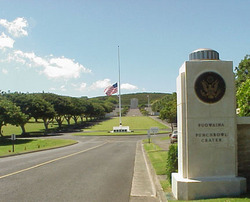
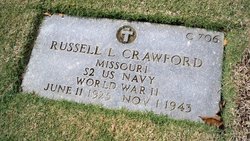
Russell L. Crawford, KIA, from Warrensburg, Missouri
 The Solomon Islands Campaign
The Solomon Islands Campaign 
 Operation Goodtime commenced. The Third Amphibious Force, U.S. Navy Task Force 31,
Operation Goodtime commenced. The Third Amphibious Force, U.S. Navy Task Force 31, under command of Rear Admiral Theodore S. Wilkinson, landed the U.S. 1st Marine Amphibious
Corps, under command of Lt. General Alexander A. Vandegrift, at Cape Torokina, Bougainville,
Solomon Islands. The assault by the Third Marine Division, under command of of
Major General Allen H. Turnage (USMC), was covered by TBF Avengers and destroyer gunfire.
During Japanese retaliatory airstrikes that caused delays in unloading cargo, the destroyer
USS Wadsworth (DD 516) was damaged by near-miss of a bomb.
RUSSELL LEVAN CRAWFORD - Johnson, MO (SEAMAN SECOND CLASS) WWII
Name:
CRAWFORD, RUSSELL LEVAN
Service Branch: NAVY
Rank: SEAMAN SECOND CLASS
Date of Death: 1 November 1943
Hostile: Kia
Home of Record City/County: Johnson
Home of Record State: Missouri
FATHER MR ROSCOE CRAWFORD
409 MCGOODWIN ST
Conflict: WWII
Death of Seaman 2nd Class Russell Levan Crawford, off the coast of Papua New Guinea from a Dive Bomber attack, 1 November 1943.
Wadsworth subsequently joined other units of Destroyer Division 45 (DesDiv 45) as part of the protective screen for a dozen troop transports, Task Group 31.5 (TG 31.5), bound for the Solomons and the initial landings of men in Empress Augusta Bay, Cape Torokina, Bougainville. The expeditionary force arrived off the beach at Cape Torokina in the early morning darkness on 1 November. Then Wadsworth led in the initial force, a group of minesweepers, into Empress Augusta Bay.
At 05:47, Wadsworth's 5 inch guns began to bark, and her shells destroyed enemy barges along the shoreline. For nearly two hours, the warship blasted targets behind the beaches, before she and sister ship Sigourney took a patrol station to protect the transports which were landing troops. Suddenly, six enemy planes plunged out of the sun at the two destroyers, and the first of six bombs exploded only 25 yards to starboard of Wadsworth. Two other bombs burst within 500 yards of her beam, one to starboard and one to port. Then, a near-miss 20 feet from her port side sprayed the after section of the ship with fragments that killed two Wadsworth sailors and wounded nine others. On the other hand, the two destroyers each bagged two of the attackers.
Destroyer Squadron 45

Length: 376.6 ft.
Beam: 39.7 ft.
Draft: 13.0 ft
Speed: 37 knots
Complement: 273
Armament: 5 5" dual purpose guns.
--------- 6 40mm AA guns.
--------- 8 20mm AA guns.
--------- 10 21" Torpedo tubes
--------- 2 Depth-charge racks.
--------- 6 Depth-charge pods.
Class: Fletcher
Beam: 39.7 ft.
Draft: 13.0 ft
Speed: 37 knots
Complement: 273
Armament: 5 5" dual purpose guns.
--------- 6 40mm AA guns.
--------- 8 20mm AA guns.
--------- 10 21" Torpedo tubes
--------- 2 Depth-charge racks.
--------- 6 Depth-charge pods.
Class: Fletcher
The second Wadsworth (DD-516) was laid down on 18 August 1942 at Bath, Maine, by the Bath Iron Works; launched on 10 January 1943; sponsored by Mrs. Rebecca Wadsworth Peacher, the great-great granddaughter of Commodore Alexander S. Wadsworth, and commissioned at the Boston Navy Yard, on 16 March 1943, Comdr. John F. Walsh in command.
They (DESRON 45) formed the escort for the invasion of Bougainville, 1 November 1943 and then earned stars for operations in the Pacific war including the consolidation of the northern Solomon Islands, the Bismarck Archipelago operation and the invasions of the Mariana Islands and Palau.
The first troops put ashore on Bougainville were 13,000 Marines and a convoy of 12 transports screened by 11 destroyers under command of Commander Ralph Earl, ComDesRon-45. Ships were, USS Fullam, Guest, Bennett, Hudson, Anthony, Wadsworth, Terry, Braine, Sigourney, Conway and Renshaw.
A few Jap aircraft struck D-Day morning, but were intercepted by our fighters. The only ship casualty was a near hit to the Wadsworth that killed two of the crew. On D-Day afternoon about 100 Jap Carrier planes were intercepted by our pilots. Not one ship or landing craft was hit by the attacking planes.
Matthews-Crawford
American Legion Post 131
733 East Young, Bus. 50
P.O. Box 91
Warrensburg, MO 64093
(660) 747-5957
private, of Leeton, Mo.
-
[01-6235] William Thomas, George W., Stephen, John, John, Giles, Hiel, Nathaniel, Nathaniel, John, John
He served in Co. B, 356th Infantry, and Co. E, 138th Infantry, He was killed in action. His tombstone is at Pleasant Grove Church Cemetery in Warrensburg, Mo.Birth: 1891 Death: Sep. 29, 1918 
Parmley, David T S/N 2,184,071
Residence : Maryville, Nodaway County, MOInducted at: Maryville on 9/19/1917
Place of Birth: Iron Town, MO
Age or date of birth: 26 1/3 years
Organizations served in: Co B 356 Infantry, Co E 138 Infantry
Grade: PVT
Served Overseas from 5/3/1918 to 9/29/1918
Remarks: Killed in action 29 SEP 1918; Father, William T Parmley, Leeton, MO notified
Source: Missouri Digital Heritage
 |
|
Matthews-Crawford Post 131 Inc, American Legion
ca 1968 Past Commanders and SP4 Thomas "Tommy" Bright r., KIA March 12, 1969, Vinh Binh, Alex Nassif 2nd from right top row next to Garrett Crouch
Front Row 1. Fred B House 2. Tommy Bright, Jr. 3. H. G. "Tab" Taubert, Lonnie DesCombes 5. W C "Bill" Lee 6. H. H. Russell
2nd Row 1. Mr. L Phillips 2. Dr. Emmet Ellis 3. Dr. A. L. "Stevie" Stevenson 4. Horace Cash 6. Ralph Martz 6.Thomas Dunham
3rd Row 1. Earl Priest 2. Mr. Claude Grainger 3. Floyd Fewel 4. Bob Theiss, 5 Aleck "Alex" Nassif, 6. Garrett Crouch
|







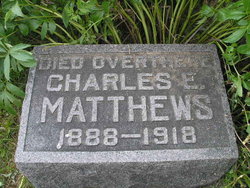
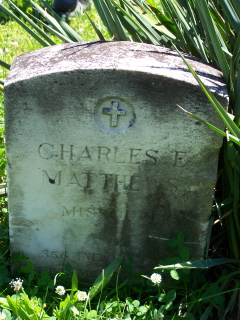





2 comments:
Buddy Baker remembers Russell Crawford well. They were in school together and played together as kids.
Ask Buddy if Russell's Father Roscoe worked for the City of Warrensburg? I remember a Roscoe when I was little, very nice man and did not know of his terrible loss until just recently.
Post a Comment